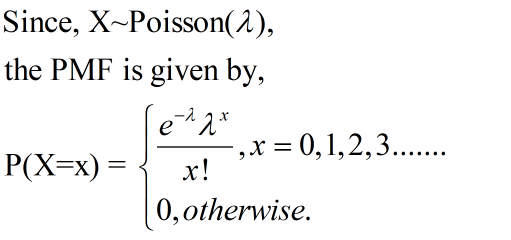(a) Find P(X=0) (since there have been no earthquakes that severe in the past decade) in terms of 2.
(a) Find P(X=0) (since there have been no earthquakes that severe in the past decade) in terms of 2.
Calculus For The Life Sciences
2nd Edition
ISBN:9780321964038
Author:GREENWELL, Raymond N., RITCHEY, Nathan P., Lial, Margaret L.
Publisher:GREENWELL, Raymond N., RITCHEY, Nathan P., Lial, Margaret L.
Chapter13: Probability And Calculus
Section13.2: Expected Value And Variance Of Continuous Random Variables
Problem 10E
Related questions
Topic Video
Question
100%
Please help with statistics question attached.

Transcribed Image Text:In April 2011, an earthquake of magnitude 9+ struck Fukushima, Japan, causing catastrophic damage. Find a
90% confidence interval for the expected time E until the next earthquake somewhere in the world that is as
severe as that one, using only the fact that there have been no such events in the past ten years. To do this,
once again we need to make an assumption. The most neutral approach is to presume that such events behave
as a Poisson process, occurring at random times independent of each other, with a constant underlying
probability of an event at any given moment. Take the units of time, conveniently, to be decades. Let X be
the number of such events in the past decade; by our assumption, X Poisson(2). Also, the times between
the events of a Poisson process are exponentially distributed with parameter 1 (that is, At) = te " for t> 0.)
(a) Find P(X=0) (since there have been no earthquakes that severe in the past decade) in terms of a.
Expert Solution
Step 1

E = expected time until next earthquake.
Times between the events of the process follow exponential distribution.
Step by step
Solved in 2 steps with 4 images

Knowledge Booster
Learn more about
Need a deep-dive on the concept behind this application? Look no further. Learn more about this topic, statistics and related others by exploring similar questions and additional content below.Recommended textbooks for you

Calculus For The Life Sciences
Calculus
ISBN:
9780321964038
Author:
GREENWELL, Raymond N., RITCHEY, Nathan P., Lial, Margaret L.
Publisher:
Pearson Addison Wesley,

Calculus For The Life Sciences
Calculus
ISBN:
9780321964038
Author:
GREENWELL, Raymond N., RITCHEY, Nathan P., Lial, Margaret L.
Publisher:
Pearson Addison Wesley,